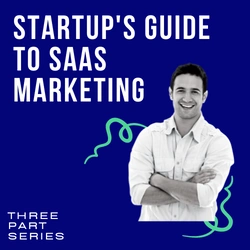Updated: April 27, 2021
How to Optimize Your YouTube Videos with SEO Keywords To Boost Your Rankings
Table of Contents
YouTube can be an incredible source of highly-targeted, hungry traffic. Two hundred buyers from YouTube can be more valuable to your bottom line than 2,000 from anywhere else because those coming from YouTube are hyper targeted. They watched your video and engaged with your content, and they want more – they’re ready to open their wallets.
I’ve worked with small to medium-sized clients and a few non-profits who found the entire experience of YouTube marketing to be overwhelming. You need a strong brand identity and presence on YouTube and that starts with optimizing your channel through your channel banner, thumbnails and descriptions.
But optimization isn’t just for text – you have to optimize the videos themselves. Optimizing a YouTube channel whether it’s been around for a while or not takes a few hours, but you’ll start to notice an increase in search engine placement and engagement within 30 days, making the entire process very worthwhile.
Let’s get to it.
YouTube Is Now A Mobile First Platform
Most YouTube users are browsing on their mobile devices and I do mean most – 71% to be exact according to YouTube. What does that mean for you? Your channel and all videos must be optimized for mobile display.
- Original high definition (HD) photos
- Original and engaging thumbnails
Get those two important things handled first for your YouTube account because without original HD photos and engaging HD thumbnails there’s no point in moving to the next step. I’ll wait.
Now that you have original photos in high-definition suitable for high-quality and retina ready mobile screens it’s time to discuss what YouTube really is. Most people see YouTube as a video sharing platform – that’s the public image but in truth YouTube is a video search platform. And just like Google’s flagship search it’s important to use SEO in all videos.
Getting To Know YouTube SEO
As a content marketer and copywriter I’m well-versed on search engine optimization for Google and Bing, but YouTube is a little different. The same tactics don’t immediately apply here. Finding content on YouTube is similar to any other search engine – you search for it by keywords. Google owns the two largest search engines in the world – Google.com and YouTube. How do you make your videos discoverable?
8 Things To Better Rank Your YouTube Videos In Search Results
1. Choose your topic wisely.
If you add in a bunch of tags and keywords that aren’t relevant to your actual video you will be punished and YouTube will lower your rank or remove you altogether from the few first pages of results. That’s essentially like living in a digital desert. Content goes there to die slowly.
2. Spy on your competitors and be better.
Jump onto YouTube.com and type in each of your relevant keywords. Find out who your top competitors are and read their headlines, descriptions, tags and watch their videos. Take note of their graphics.
These videos are your competitors, and you want to leapfrog over them in the search results. Often this means you have to write a more engaging headline, stronger description and may even have to lengthen your own video with some additional information.
3. Read every comment.
You can use the comments section of every video to your advantage. Jot down every question that a viewer poses in the comment section. Find out what concerns, complaints or confusion the viewers had with your competitor’s video.
You’re going to want to integrate these things into your own video. If 5% to 10% of comments are similar – same questions or issues take a special note of that (in bold) because you’re going to want to include that in your video description. Make it known that you answered that question or issue in your video unlike your competitor.
4. Focus on underserved niches if you can.
Underserved niches are the easiest and fastest way to get highly-targeted views. There are thousands of knitting videos so consider how you can set yourself apart.
Are there any sub-niches within your niche that people are searching for but isn’t fully covered on YouTube yet? Can you differentiate by style or type or material?
5. Upload your video with the right keywords.
Do not, under any circumstances, pepper in a bunch of keywords you think could be considered relevant to your video. Remember you’re using a Google product which means it already knows everything about your website, sales page, product, etc. Make sure your keywords all match up.
Don’t obsess over getting 200,000 views per video.
Obsess over getting hyper-targeted views. I’ve personally witnessed many videos with less than 100 views make three times more money in product sales and affiliate commissions than videos with ten times more views.
How? Because they’re hyper-targeted and hungry buyers.
6. Be specific and fight the urge to go general in your keywords and description.
If you’re uploading a video to introduce and upsell a handcrafted piece of silver jewelry with personalization you may, at first, want to use keywords like ‘jewelry, silver, personalized, handmade, initials, women, diamonds, gifts’.
Those keywords are a dime-a-dozen and very general bordering on generic. Keywords like those will keep you far away from page one in results because you’re competing with pre-existing videos that have hundreds of thousands of views. That’s not hyper targeting!
Instead, consider using ‘handcrafted silver jewelry, Colorado silversmith, monogrammed silver necklace, small silver jewelry maker’. In the example I included the keyword ‘diamonds’ but this silversmith doesn’t sell diamonds, so it’s a false keyword. You’re hoping to use the keyword to grow your views but why and at what cost?
If a person wants silver jewelry with a diamond set in it, and you don’t sell that you’re only going to waste his or her time and annoy the person. There’s no upside to your business in doing that.
7. Use some of your video script in your YouTube description with plenty of long-tail keywords.
Write your video description in a conversational tone and include as many long keywords as you can provide you can add them organically. You don’t want someone to read the description and immediately know that you wrote it not for them but for a search engine bot. Pick out a few highlights in your video and include them in the description.
One tactic that works very well for both SEO and viewers is to include a table of contents in your video description along with timestamps (minutes and seconds):
00:10 Intro to Colorado Silversmiths
01:07 How We Make Our Silver Masterpieces and Tour Our Garage Shop
04:15 What Is The Lost-Wax Method and Why We’re One of the Few Left Doing It
07:23 Our Top Selling Showcase of Handmade Necklaces
10:31 Unbelievable New Customer Offer of 22% Off Our Most Popular Necklaces
Do you see what we did there? Under the guise of putting our potential customer/viewer first and including a timestamped video inventory allowing for convenient fast-forwarding we actually built five long-tail keyword rich sentences into our product description for the search bot.
8. The URL in the description must be highly targeted to the keywords and video content.
Add a hyper related URL preferably to the most relevant sales page of your website that will naturally share many of the same keywords as your video headline and description.
If your video is focused on a specific product or service don’t include the external link to your main domain. Link only to the specific sales page for that exact product or service.
A Few Important Things To Remember About YouTube
While it’s true that the number of comments, shares and likes on your video will help increase your search ranking it’s not the end-all-be-all of your video’s existence. By all means ask your site visitors and viewers to like and share the video. Embed the video on your own website and share it on all your social media platforms but ask for engagement. Post and pin to the top a comment asking if anyone has questions, explain you’ll be answering all questions and responding to all comments for the next 48 hours. Make it known that you get involved.
Overall view duration matters. If you have a seven-minute-long video and most people aren’t making it beyond the 17-second mark the problem is on you. Take down the video, retool and edit it once more. Make it more informative or entertaining or move your major points to the front, so people understand what they’ll be missing if they don’t watch most of the video. Let viewers know that this is a video that will add actual value to their life.
Sometimes this means you need to create shorter videos, rewrite your description or maybe even take a video down entirely. If too many people can’t make it very far into your video Google/YouTube considers that part of your video bounce rate, and you’ll get demoted in the rankings because of it.
Google doesn’t like a high bounce rate – that means low-quality content after all. A complete table of content in the video description can also help with a high bounce rate by letting viewers know what you have for them.
Stay Engaged With Your YouTube Channel and Followers
Maintain interaction with your YouTube viewers as often as possible. Ask questions at the end of your videos, request suggestions for additional content and ask viewers to include those recommendations in the comments section of the video. Respond to the comments as quickly as possible. Make sure you have your YouTube account setup to notify you by email when you receive a new comment. By keeping yourself engaged with your viewers you show that you’re an authority on the topic and that you care and that goes a long way.
Sometimes all it takes is one share. We’ve had clients who have uploaded videos and nothing happened – which is normal. We advised them to get more involved, be seen and answer questions, otherwise to actively engage with their target audience (and buyer persona). One share from one viewer when the video had only 27 views suddenly skyrocketed the viewer number to over 500 overnight. Why? Because that one share was from a hyper-targeted individual who shared the video with her own hyper-targeted audience of 4,000. By the end of the weekend the client made 61 sales.



It’s the sales page where the magic happens. This is the page that gives you a return on your marketing investment. It is on this page where we convert visitors to paying customers. Do you know the valuable elements of a high-converting sales page? You will soon. Keep Learning >

Content marketing is the backbone of the biggest success stories over the last decade. I’m referring to companies like Zomato, Canva, ThinkGeek, HootSuite and even Blendtec. It’s not surprising that so many brands are focusing on content marketing, given the average ROI is twice any other type of digital marketing. Keep Learning >



